
For yesterday’s midday 179, see interpellation.
For yesterday’s evening 376, see transparencies.
For some backstory, see Lottery in this journal,
esp. a post of June 28, 2007:
Real Numbers: An Object Lesson.
One such number, 8775, is suggested by
a Heinlein short story in a Jan. 25 post.
A search today for that number —
That Jan. 25 post, "For Your Consideration," also mentions logic.
Logic appears as well within a post from the above "8775" date,
August 16, 2016 —
|
Update of 10 am on August 16, 2016 —
See also Atiyah on the theology of |
Related: Remarks by Charles Altieri on Wittgenstein in
today's previous post.
For remarks by Wittgenstein related to geometry and logic, see
(for instance) "Logical space" in "A Wittgenstein Dictionary," by
Hans-Johann Glock (Wiley-Blackwell, 1996).
The New York Lottery numbers yesterday evening:
897 and 3454. See the corresponding Log24 posts.
Last evening's New York Lottery numbers were 123 and 5597.
The 123 suggests page 123 of DeLillo's Underworld .
(For some context, see searches in this journal for Los Muertos and for Pearly Gates of Cyberspace .)
The 5597 suggests the birth date of literary theorist Kenneth Burke— May 5, 1897.
These two topics—
are combined in Heaven's Gate, a post from April 11, 2003—
Babylon = Bab-ilu, “gate of God,” Hebrew: Babel or Bavel.”
|
Modern rendition |
Kenneth |
The above observations on lottery hermeneutics, on a ridiculously bad translation, and on Latin rhythms did not seem worth recording until…
The New York Times Book Review for Sunday, October 30, arrived this morning.
From page 22, an extract from the opening paragraph of a review titled…
Making Sense of It
David Bellos offers a new approach to translation.
The theory of translation is very rarely— how to put this?— comical. Its mode is elegy, and severe admonishment…. You can never, so runs the elegiac argument, precisely reproduce a line of poetry in another language…. And this elegiac argument has its elegiac myth: the Tower of Babel, where the world's multiplicity of languages is seen as mankind's punishment— condemned to the howlers, the faux amis , the foreign menu apps. Whereas the ideal linguistic state would be the lost universal language of Eden.
See also Saturday's Edenville.
Continuing this afternoon's meditation on Hollywood
endings, recall the ending of the 1966 David Niven
version of Casino Royale—
"Eventually, Jimmy's atomic pill explodes, destroying Casino Royale
along with everyone inside…. Sir James and all of his agents then
appear in heaven, with angel wings and harps and Jimmy Bond is
shown descending into the fires of hell." — Wikipedia
This evening's NY Lottery numbers are 169 and 1243.
An occurence of 169 in this journal on June 18, 2008—

This morning's exercise in lottery hermeneutics is unusually difficult.
Yesterday was Bloomsday (the date described in
James Joyce's Ulysses ) and the New York Lottery numbers were…
Midday numbers: 3-digit 181, 4-digit 9219.
Evening numbers: 3-digit 478, 4-digit 6449.
For 181 and 9219, see the following—
"With respect to every event, we must ask
which element has been subjected directly to change."
— Ferdinand de Saussure, Course in General Linguistics
(New York, The Philosophical Library, Inc., 1959), page 181
That Saussure page number was referenced in the following thesis
on James Joyce's other major novel, Finnegans Wake—
The thesis is from the University of Vienna (Universität Wien ).

The word Wien , in the derived form denoting an inhabitant of that city,
figured prominently in yesterday's news.
As for the evening numbers—
478 perhaps signifies the year 478 BC,
cited in Lawrence Durrell's Sicilian Carousel as the year
the ruler Gelon died.
For the evening 6449, note that the poem by Wallace Stevens quoted
here on June 15 in A for Anastasios deals with "the river of rivers"…
perhaps signifying time.
Interpreting 6449 chronologically yields 6/4/49.
The film artist John Huston, discussed in an essay from that date,
might appreciate the representation of the ancient Sicilian
river god Gelas as a man-headed bull on a coin from
around the year 478 BC.
For some perceptive remarks about Durrell, see the
article by Nigel Dennis in LIFE magazine's Nov. 21, 1960
issue (with cover noting Kennedy's victory in that year's
presidential election).
All of the above may be viewed as an approach to the aesthetic
problem posed by Dennis in yesterday's Bloomsday post—
"The problem that arises with this sort of writing is
one of form, i.e. , how to make one strong parcel
out of so many differently shaped commodities,
how to impose method on what would otherwise
be madness."
"The world has gone mad today…." — Cole Porter
For some related remarks, see page 161 of
Joyce's Catholic Comedy of Language *
by Beryl Schlossman (U. of Wisconsin Press, 1985)
and James Joyce in the final pages of The Left Hand of God
by Adolf Holl.
* Update of July 6, 2011—
This title is a correction from the previous title
given here, Moral Language by Mary Gore Forrester.
Google Books had Schlossman's content previewed
under Forrester's title.
Recent New York Lottery numbers—

The interpretation of "056" in yesterday's
The Aleph, the Lottery, and the Eightfold Way
was not without interest, but the interpretation there
of "236" was somewhat lacking in poetic resonance.
For aspiring students of lottery hermeneutics,
here are some notes that may help. The "236" may
be reinterpreted as a page number in Stevens's
Collected Poems . It then resonates rather nicely
("answers when I ask," "visible and responsive")
with yesterday evening's "434"—
For today's midday "022," see Hexagram 22: Grace in the context of the following—
As for yesterday afternoon's 609, see a particular Stevens-related page with that number…

For "a body of thought or poetry larger than the subject's," see The Dome of the Rock.
Three links with a Borges flavor—
Related material
The 236 in yesterday evening's NY lottery may be
viewed as the 236 in March 18's Defining Configurations.
For some background, see Configurations and Squares.
A new illustration for that topic—

This shows a reconcilation of the triples described by Sloane
in Defining Configurations with the square geometric
arrangement described by Coxeter in the Aleph link above.
Note that the 56 from yesterday's midday NY lottery
describes the triples that appear both in the Eightfold Way
link above and also in a possible source for
the eight triples of Sloane's 83 configuration—

The geometric square arrangement discussed in the Aleph link
above appears in a different, but still rather Borgesian, context
in yesterday morning's Minimalist Icon.
Yesterday's New York Lottery— Midday 346, Evening 104.
Interpretations:
346 as a page number. See The Storyteller in Chance (March 22, 2009), with its "spinning wheel" link to a passage by Joan Didion.
104 as a date. See 1/04/11— Didion on "a certain vertiginous occlusion of the imagined and the real" in the post The White Itself.
|
Excerpt from a Log24 post of May 2, 2003 Though truth may be very hard to find in the pages of most books, the page numbers are generally reliable. This leads to the following Zen meditations. From a review of the film “The Terminator”:
From a journal note on religion, science, and the meaning of life written in 1998 on the day after Sinatra died and the Pennsylvania lottery number came up “256”:
From Michael Crichton’s Rising Sun John Connor (aka J. C.) offers the following metaphysical comment on the page number that appears above his words (256):
Connor is correct. The number 256 does indeed seem to be, and indeed it seemed to be again only yesterday evening, when the Pennsylvania lottery again made a metaphysical statement. Our Zen meditation on the trustworthiness of page numbers concludes with another passage from Rising Sun, this time on page 373:
Here J. C. offers another trenchant comment on his current page number. The metaphysical significance of 373, “the eternal in the temporal,” is also discussed in the Buddhist classic A Flag for Sunrise, by Robert Stone (Knopf hardcover, 1981) … on, of course, page 373. |
Related graphic art —
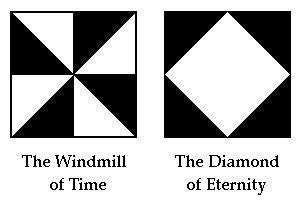
This is from a Log24 search, "Windmill + Diamond."
From yesterday morning —
“Play the numbers, play the odds
Play ‘Cry Me a River’ for the Lord of the gods”
— Bob Dylan at
https://genius.com/Bob-dylan-murder-most-foul-lyrics
This suggests . . .


Polydor 2001 566 —

This post was suggested by a detail, the number 777, on the cover of the
American edition of the novel discussed in yesterday morning's post Punctum.
Saturday May 3, 2008
|
Or: Expanding the Spielraum, continued
Wikipedia on author Michael Connelly —
Connelly had planned on following his father’s early choice of
career in building construction and started out at the
University of Florida in Gainesville as a building construction major.
After earning grades that were lower than expected, Connelly went
to see Robert Altman’s film The Long Goodbye (1973) and was
enchanted by what he saw. The film, based on Raymond Chandler’s
1953 novel of the same name, inspired Connelly to want to become
a mystery writer. Connelly went home and read all of Chandler's
works featuring Philip Marlowe, a detective in Los Angeles during
the 1940s and ‘50s, and decided to switch majors to journalism with
a minor in creative writing.[4] He was a student of Harry Crews.
[See also …
https://blogs.wsj.com/speakeasy/2012/11/24/
the-teacher-michael-connelly-never-forgot/.]
A 2002 novel by Connelly — City of Bones .
Two scenes from a 2014 TV pilot based on the 2002 novel —


The "Bosch" pilot does not state the address, but its location in the
Hollywood Hills suggests a review of Heinlein Lottery in this journal.
"Bonedigger Bonedigger
Dogs in the moonlight"
— Paul Simon
* Title suggested by that of the previous post, "Point Zero."
I was sidetracked by this peculiar Tweet after a search for
fictions titled "The Weaver's Tale."
A version of the tale that I liked had led to the author's Twitter account
and the above remarks, dated 1 Feb. 2017.
That Tweet date led in turn to Log24 posts now tagged Heinlein Lottery.
8777.
From yesterday's post Hollywood Arrival —
" Yesterday's events at 6407 Sunset Blvd. in Hollywood,
together with the logic of number and time from recent
posts based on a Heinlein short story, suggest that the
character played by Adams is a sort of 'fifth element'
needed to save the world.
In other words, the strange logic of recent posts ties the
California lottery number 6407 to the date April 12, 2015,
and a check of that date in this journal yields posts tagged
Orthodox Easter 2015 that relate to the 'fifth element.' "
A related image from Arrival (at 1:37:18) —

A related passage of scientific prose —
"Paramount discoveries are still being made…."
Or at least distributed.
In a New Yorker "Cultural Comment" column today,
Richard Brody describes a 2004 novel that he says …
"… dramatizes the American character as
vast, manifold, and inchoate;
it can use its prodigious and uninhibited energy
for good or for evil, and it shifts
under the sudden force of unforeseeable events.
The shifts and pivots of the American nation
at large are also those of each individual American.
The grand political stage and the intimate life
are inseparable; identity itself is inextricable
from the currents of history. The novel’s
mighty psychological weight rests upon
a terrifyingly delicate balance of circumstances
that depend on whims of chance."
I prefer the shifts and pivots in earlier fictions; for example,
those of Robert A. Heinlein, who died in 1988.
Some backstory : Glory Road in this journal.
In the new film Arrival , Amy Adams plays a linguist
who must interpret the language used by aliens whose
spaceships hover at 12 points around the globe.

Yesterday's events at 6407 Sunset Blvd. in Hollywood,
together with the logic of number and time from recent
posts based on a Heinlein short story, suggest that the
character played by Adams is a sort of "fifth element"
needed to save the world.
In other words, the strange logic of recent posts ties the
California lottery number 6407 to the date April 12, 2015,
and a check of that date in this journal yields posts tagged
Orthodox Easter 2015 that relate to the "fifth element."
Midrash by Ted Chiang from the story on which Arrival was based —
|
After the breakthrough with Fermat's Principle, discussions of scientific concepts became more fruitful. It wasn't as if all of heptapod physics was suddenly rendered transparent, but progress was suddenly steady. According to Gary, the heptapods' formulation of physics was indeed topsy-turvy relative to ours. Physical attributes that humans defined using integral calculus were seen as fundamental by the heptapods. As an example, Gary described an attribute that, in physics jargon, bore the deceptively simple name “action,” which represented “the difference between kinetic and potential energy, integrated over time,” whatever that meant. Calculus for us; elementary to them. Conversely, to define attributes that humans thought of as fundamental, like velocity, the heptapods employed mathematics that were, Gary assured me, “highly weird.” The physicists were ultimately able to prove the equivalence of heptapod mathematics and human mathematics; even though their approaches were almost the reverse of one another, both were systems of describing the same physical universe. |
The number 8775 in the previous post suggested, via a lottery search,
a look at the date August 16, 2016. The number was from a Hollywood
street address in a 1941 Robert A. Heinlein story. Heinlein himself lived
on the same street, at number 8777.
A lottery search for 8777 like that for 8775 in the previous post
yields the date July 10, 2000. Remark from that date in the
Los Angeles Times —
"As in any company of size, some of the performances
stand out sharply. Walker almost steals the show as Puck
and the officious Quince of the group of dummies who
put on the play-within-a-play at the end."
Walker is "the group's conceptual leader" Matt Walker.
Another conceptual leader — Denzel Washington …
Setting for the La La Playhouse adaptation of "Fences" —
"But if memories were all I sang, I'd rather drive a truck."
New York lottery today —


This evening's NY lottery results, interpreted as a phone number, yield …

See also posts tagged The Poet's Pineapple …
"The momentary footings of a climb
Up the pineapple, a table Alp and yet
An Alp…."
— Wallace Stevens, "Someone Puts a Pineapple Together"
(Lines from p. 252 of Partisan Review Vol. XIV No. 3,
May-June 1947)
This post is thanks to Nicole Kidman …
E! Online today reminds us that "Bowie's song 'Nature Boy'
was ... featured in Kidman's 2001 film Moulin Rouge ."
A YouTube video of the Moulin Rouge "Nature Boy"
was uploaded on April 1, 2011. That date in this journal —
|
The last New York Lottery number
"…every answer involves as much of history
James S. Atherton, The Books at the Wake: |
James Joyce reportedly died on today's date in 1941.
(A sequel to Letters)

See Page 181 in Source of the Finite (St. Augustine's Day, 2014)
and Page 305 in Lost in Translation (50th Reunion Day, Harvard '64).
In memory of reporter Bob Simon —
NY Lottery midday Feb. 12, 2015:
In memory of reporter David Carr —
NY Lottery evening Feb. 12, 2015:
“Bit by bit, putting it together.
Piece by piece, working out the vision night and day.
All it takes is time and perseverance
With a little luck along the way.”
— Stephen Sondheim

“We tell ourselves stories in order to live.
The princess is caged in the consulate.
The man with the candy will lead the children into the sea.
The naked woman on the ledge outside the window
on the sixteenth floor is a victim of accidie, or
the naked woman is an exhibitionist, and it would be
‘interesting’ to know which. We tell ourselves that it makes
some difference whether the naked woman is about to
commit a mortal sin or is about to register a political protest
or is about to be, the Aristophanic view, snatched back to the
human condition by the fireman in priest’s clothing just visible
in the window behind her, the one smiling at the telephoto lens.
We look for the sermon in the suicide, for the social or moral
lesson in the murder of five. We interpret what we see, select
the most workable of the multiple choices. We live entirely,
especially if we are writers, by the imposition of a narrative line
upon disparate images, by the ‘ideas’ with which we have learned
to freeze the shifting phantasmagoria which is our actual
experience.”
This evening’s New York Lottery: 659 and 7326.
Continued from Nov. 21, 2010:
“They always print… the lottery.”
The reader may interpret the lottery numbers
as he or she pleases.
Related material: Jersey City in Log24 posts
of April 25 and April 28, and today’s NY Times
image of another Jersey City landmark.
Geometer H. S. M. Coxeter died on this date in 2003.
This evening’s daily number from the Keystone state: 822.
Yakov G. Sinai today won the 2014 Abel Prize.
Earlier, he won the Wolf Prize.
Wolf Foundation press release quoted in the March 1997
Notices of the American Mathematical Society —
On Sinai —
“He is generally recognized as the world leader
in the mathematics of statistical physics.”
This afternoon’s New York Lottery: 813 and 1857.
The title refers to a New York Times story about
an art exhibition that opened today.
This evening’s NY Lottery numbers: 016 and 2858.
Pictures from these links:
016 (Blackboard Jungle , 1955) —

2858 (number of a Log24 post, 2007) —
Continued from remarks of Marissa Mayer at Davos last year —
Related material — This evening's NY lottery…

… and Log24 post number 1424 —
(Where Entertainment Is God , continued)
Yesterday's evening numbers in the New York Lottery
were 007 and 3856. You are free to supply your own
interpretation of the former. The latter may, if you like,
be interpreted as post 3856, The Illuminati Stone .
Some context:
(Click for a larger, clearer image.)
The Kernel of the Concept of the Object…
according to the New York Lottery yesterday—
From 4/27
From 11/24

A page numbered 176

A page numbered 187

Evening numbers for the New York lottery
yesterday were 182 and 8691.
One interpretation of the latter number is
8/6/91, birth date of the WWW—
| Friday, August 13, 2010 For a Bright Star m759 @ 2:14 AM From Wikipedia's timeline for 1991— August 6 – Tim Berners-Lee announces |
For one interpretation of the former number,
see Random Reference.
… Meets "The Master"—

Today's midday NY Lottery: 333 and 5885.
"Continue a search for thirty-three and three." — The Eight (1988)
"Make me young." — Kilgore Trout in
Breakfast of Champions . Trout was modeled after
author Theodore Sturgeon… who died on 5/8/85.
(An example of Sturgeon's work: The Dreaming Jewels (1950).)
Related illustrations from the eighth day of 2012—
See also "I'm sorry to be catechizing you like this."
The New York Lottery:
CATCH OUR LIVE DRAWINGS:
NUMBERS and WIN 4
Draw Day: Twice Daily
Draw Time: Midday: 12:20 p.m. – 12:30 p.m.
Evening: 7:30 p.m. – 7:40 p.m.
NY Lottery this evening: 674 and 1252 —
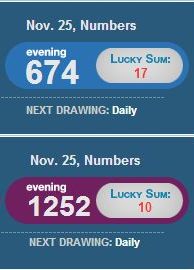 .
.
Contrapuntal themes:
Related Log24 posts today—
at 11:30 AM ET (see post 674 ) and
at 7 PM ET (see post 1252).
The Devil at Midday:
Interpreting the midday numbers,
172 and 7817, is more difficult. Perhaps 172
refers to a Zen page number in a post from
the Feast of Saint Louis in 2003, and perhaps,
in a less saintly manner, 7817 refers to
two posts in which these four digits appear
in product numbers within links— namely,
the Garden Party "Background" link and
the Seven Bridges "wild" link.
Then again, perhaps not.
Last evening's NY Lottery numbers
985 and 3274, interpreted as the
numbers of Log24 posts, suggest
a look at Joyce's nightmare— history.
* The title refers both to a film and to
a Log24 post, Random Access Memory.
For clergymen who embrace Trudeau's
"Story Theory of Truth" (see last evening's
7:20 PM post on geometry and A Wrinkle in Time )…
Here are two meditations suggested by
yesterday evening's New York Lottery :
1. Page 141 in Philosophies of India—
2. Post 4658 in this journal— A Wrinkle in Dimensions.
"… the effective work of memory is the very definition of art."
— "In Memoriam: Chris Marker," by Richard Brody,
New Yorker weblog post, July 30, 2012
New York Lottery this evening: 178, 0772.
Definition: See 178 on May 25, 2012.
Art: See 772 on Nov. 21, 2010 and Harvard Black Diamond.
Moonshine:
The time of this post, 8:28, may be taken as
a reference to the date, 8/28, of the Feast of St. Augustine.
Augustine's remarks on memory are not without interest.
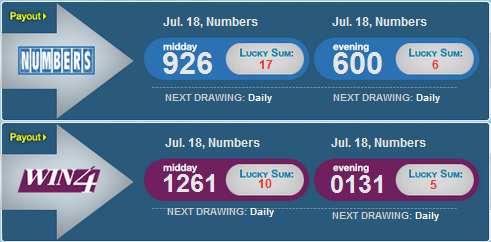
Connoisseurs of hermeneutics will find that interpretations
of three of the above numbers are not hard to come by.
Consider, say, dates, post numbers in Log24, times, and so forth.
For the fourth number, 0131, try the following search:
In memory of art historian John Golding,
whose obituary appeared (finally) in
today’s online Telegraph—
“His most recent book, Paths to the Absolute (based on
his 1997 series of AW Mellon lectures in the Fine Arts
delivered at the National Gallery of Art, Washington DC),
addressed seven abstract artists — Mondrian, Kazimir
Malevich, Kandinsky, Pollock, Barnett Newman, Rothko
and Clyfford Still — and argued that abstract art was
not simply decorative but ‘heavily imbued with meaning
[and] with content’. The book won the Mitchell Prize for
the History of Art in 2002.”
Commentary on Golding’s obituary suggested by
this evening’s 4-digit New York Lottery number,
1051—
Post 1051 in this journal, together with a post from
April 1, 2012 found in a search for the digits 1051
in Log24. That search may serve as a review.
* A phrase from Gravity’s Rainbow
New York Lottery today—

Without imagination, these digits are a meaningless jumble.
With imagination…
608 might refer to June 8, the Saint's Day of Gerard Manley Hopkins.
(See the date July 29, 2002, that appeared in an earlier post today
as the publication date of Geometrical Landscapes . In this
journal, a post on that date, "At Random," referred to Hopkins.)
8516 might refer to 8/5/1916. A check of a hometown newspaper
on that date yields…
"St. Joseph's Garden Party and Bazaar 22, 23, 24.
Pictures. Everybody Welcome. Admission to Garden Ten Cents"
And in the evening…
937 might refer to a post on the nihilistic philosophy of Joan Didion, and
7609 might refer to an occurrence of these digits in a link
to "7/11" in a post from the feast of St. Ignatius of Loyola last year.
For a more cynical view of lottery hermeneutics, see
"High on RAM (overload)," by Jo Lyxe.
Happy birthday to Stevie Nicks.
Mormon Mitt Romney at the Baptist school Liberty University today:
"The task set before you four years ago
is now completed in full."
I do not know what that task was. In this journal four years ago,
the task was lottery hermeneutics… a subject I doubt is taught
at Liberty University.
The New York lottery numbers from Sunday, May 11, 2008,
in a May 12 post four years ago could be interpreted as
pointing to the date 3/13—
Say, 3/13, 2006— a date on which this journal quoted some
remarks on the biblical phrase "the fullness of time."
Those remarks were neither Baptist nor
Mormon, but rather Presbyterian.
A meditation suggested by the April 20 post Complex Reflection
and by the life and April 20 death of a scientist who worked
at Los Alamos (home of the Monte Carlo method) and at
the Santa Fe Institute (home of complexity theory).

A search for 286 in this journal yields "Yet Another Cartoon Graveyard."
That June 1, 2008, post linked to poem 286 in a 1919 anthology.
Here is that poem, together with poem 823.
Together, these poems may be regarded as a meditation on
Simone Weil and her brother André Weil or,
more abstractly, on Love and Death.
Happy birthday to Al Pacino.
"When shall we three meet again?"

Left to right— John von Neumann, Richard Feynman, Stanislaw Ulam
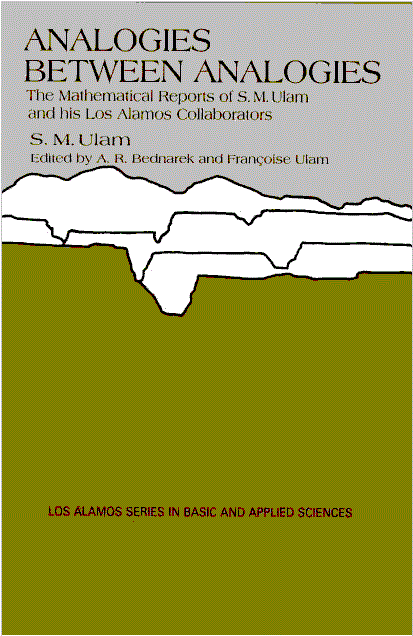
The source of the above book's title, "Analogies between Analogies,"
was misattributed in a weblog post linked to here on March 4th, 2012.
It occurs in a quote due not to Stanislaw Ulam but to Stefan Banach—

Ulam was Jewish. Banach was not.
From a webpage on Banach—
"On 3 April 1892, he was baptized in the Roman Catholic
Parish of St. Nicholas in Krakow."
See also…
(At Los Alamos, Ulam developed the Monte Carlo method.)
For Women's History Month—
The Beam of Pink Light
From a post linked to on Lyxe's upload date, Feb. 6, 2012—
“… with primitives the beginnings of art, science, and religion
coalesce in the undifferentiated chaos of the magical mentality….”
— Carl G. Jung, “On the Relation of Analytical Psychology to Poetry,”
Collected Works, Vol. 15, The Spirit in Man, Art, and Literature,
Princeton University Press, 1966, excerpted in
Twentieth Century Theories of Art, edited by James M. Thompson.
See also the NY Lottery for St. Luke's Day, 2011, publication date
of the new edition of Philip K. Dick's VALIS quoted above.
A Tale for St. Nicholas
Yesterday's midday New York Lottery numbers
were 629 and 2262.
The former suggests St. Peter's Day, 6/29, while
the latter suggests post 2262 in this journal—
Related material… As a memento mori, the three
Log24 posts from the date of Spark's death—
|
New York Lottery on Cyber Monday,
November 28, 2011—
| midday: 457 | evening: 510 |
| midday: 3990 | evening: 2310 |
Related material: Hannibal Pictures—
… And the New York Lottery, with a wry smile,
signs its Thanksgiving story J. D. Salinger .

Today's New York Lottery numbers:
Continuing the Serious Hardy Apology sequence,
here is a reference to volume number 231 in the
Springer Graduate Texts in Mathematics series—
For some less serious work, see posts on 4403 (4/4/03)
as well as posts numbered 550 and 764.

Joseph T. Clark, S. J., Conventional Logic and Modern Logic:
A Prelude to Transition (Philosophical Studies of the American
Catholic Philosophical Association, III) Woodstock, Maryland:
Woodstock College Press, 1952—
| Alonzo Church, "Logic: formal, symbolic, traditional," Dictionary of Philosophy (New York: Philosophical Library, 1942), pp. 170-182. | The contents of this ambitious Dictionary are most uneven. Random reference to its pages is dangerous. But this contribution is among its best. It is condensed. But not dense. A patient and attentive study will pay big dividends in comprehension. Church knows the field and knows how to depict it. A most valuable reference. |
Another book to which random reference is dangerous—
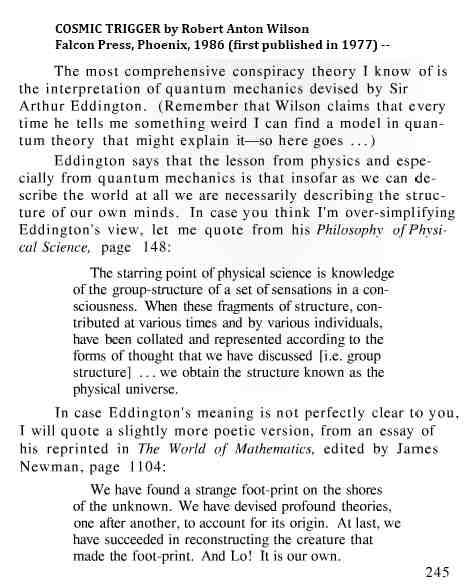
For greater depth, see "Cassirer and Eddington on Structures,
Symmetry and Subjectivity" in Steven French's draft of
"Symmetry, Structure and the Constitution of Objects"
Continued from All Hallows Eve…

The Belgian Lottery was a sponsor of
last month's 25th Solvay Conference —
"The Theory of the Quantum World,"
Brussels, October 19-22, 2011.
See also this journal in October and Change Logos—

(Physicists will recognize the kinship
with the coat of arms of Niels Bohr.)
 |
Peter Woit, phrase from a weblog post on October 25th, 2011—
"In possibly related news…."
For 779, see post 779 in this weblog.
For 8974, see Hollywood Endings.
For 082, see page 82 of Culture and Value , ed. G.H. von Wright, tr. Peter Winch (Oxford 1980) (as quoted by M. Jamie Ferreira in "The Point Outside the World: Kierkegaard and Wittgenstein on Nonsense, Paradox and Religion," Religious Studies , Vol. 30, March 1994, pp. 29-44, reprinted in Wittgenstein Studies (1997))—
Wittgenstein: “God’s essence is supposed to guarantee his existence— but what this really means is that what is here at issue is not the existence of something.”
For 0372, see page 372 in Essays of Three Decades , by Thomas Mann, translated by H. T. Lowe-Porter, Alfred A. Knopf, 1947 ("Schopenhauer," 1938, pp. 372-410)—
THE PLEASURE we take in a metaphysical system, the gratification purveyed by the intellectual organization of the world into a closely reasoned, complete, and balanced structure of thought, is always of a pre-eminently aesthetic kind. It flows from the same source as the joy, the high and ever happy satisfaction we get from art, with its power to shape and order its material, to sort out life's manifold confusions so as to give us a clear and general view.
Truth and beauty must always be referred the one to the other. Each by itself, without the support given by the other, remains a very fluctuating value. Beauty that has not truth on its side and cannot have reference to it, does not live in it and through it, would be an empty chimera— and "What is truth?"
“Don’t it always seem to go
that you don’t know what you’ve got
till it’s gone”
— Joni Mitchell, quoted here
in post 2967.
Today's midday New York Lottery—
2967 and 002.
A Date with Erin
Related material suggested by today's
midday New York Lottery— 032 and 7537—
Richard Wilhelm
on I Ching Hexagram 32:

Duration
“Duration is… not a state of rest, for mere standstill
is regression. Duration is rather the self-contained
and therefore self-renewing movement of
an organized, firmly integrated whole
[click on link for an example], taking place
in accordance with immutable laws
and beginning anew at every ending.”
and the date 7/5/37—
(This post's title was appropriated from a novel by Brian Morton.)
Yesterday's evening New York Lottery— 229 and 9294.
Alex Ross in the online New Yorker quotes a bad essay he wrote in college titled…
“The Grand Hotel Abyss: History and Violence in ‘The Shining,’”
which purports to analyze the famous scene in which Jack Nicholson
types the phrase “All work and no play makes Jack a dull boy”:
Nicholson has become a chomping-machine of language,
recycling stock phrases, appropriating whatever
drifts into his path. His words are nothing but echoes….
The lottery's 229 may be interpreted as "2/29." See a post from that date in 2008
involving echoes and the abyss.
The lottery's 9294 may be interpreted as "9/2/94." A search for that date yields
an article from Pacific Stars and Stripes—
That article is echoed by a later Doonesbury caricature
of a professor discussing echoes in black rhetoric. That
caricature is from the 2/29 post—

Or: Starting Out in the Evening, continued from noon yesterday
Yesterday evening's New York Lottery numbers were 510 and 5256.
For the former, see post 510, Music for Patricias.
For the latter, see Richard Feynman at the Caltech YMCA Lunch Forum on 5/2/56—
"The Relation of Science and Religion."
Some background….
The Aleph
"As is well known, the Aleph is the first letter of the Hebrew alphabet.
Its use for the strange sphere in my story may not be accidental.
For the Kabbala, the letter stands for the En Soph ,
the pure and boundless godhead; it is also said that it takes
the shape of a man pointing to both heaven and earth…."
— Borges, "The Aleph," quoted in Ayn Sof (January 7th, 2011)
The Y
See "Pythagorean Letter" in this journal.
Edenville
"Hello! Kinch here. Put me on to Edenville. Aleph, alpha: nought, nought, one."
"A very short space of time through very short times of space…. Am I walking into eternity along Sandymount strand?"
This evening's New York Lottery numbers are 770 and 9703.
This suggests a look at post 770 (Hesse and Bach) and at 9/7/03 (Hesse and knights).
See also Hessian.
'Hardball with Chris Matthews'
for Monday, October 17th, 2011—
FINEMAN: Right. The way to do that, Chris,
is the way that the people who ran against
Mitt Romney on behalf of Senator Ted Kennedy
did it years ago, when Romney was challenging
Ted Kennedy for that Senate seat.
They went out to Indiana — the Teddy people
went out to Indiana, found a plant that
had been shuttered by Bain Capital…
MATTHEWS: Right.
FINEMAN: … as part of a takeover and makeover…
MATTHEWS: A chop shop.
FINEMAN: … and they launched a caravan —
a caravan of unemployed people that went
all the way from Indiana to Boston.
Lights out for Mitt Romney. You have to do it that way.
You can`t do it like resenting the guy who
looks like the guy on the Monopoly card.
(LAUGHTER)

New York Lottery, evening of Oct. 19, 2011— 985 and 8739.
For 985, see Log24 post 985, "Resurrection" (Aug. 4, 2003).
For 8739, see the 8/7/39 TIME cover—
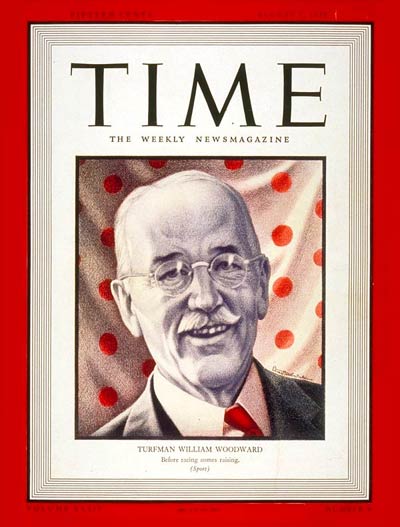
"TURFMAN WILLIAM WOODWARD
Before racing comes raising. (Sport)"
— TIME magazine cover, August 7, 1939
See also… The rest of the story.
Midday NY lottery on Oct. 19, 2011— 043 and 7531.
The latter is the birth date (7/5/31) of Jerry Slocum,
Hughes Aircraft designer and puzzle enthusiast.
For the former, see Hexagram 43 in Geometry of the I Ching.
"There is work to be done
in the dark before dawn."
Log24 posts suggested by the New York Lottery
yesterday (the Feast of Saint Luke) —
(Continued from 24 hours ago)
Saturday evening NY lottery: 302 and 0181.
For 302, see OCODE. For 0181, see the bridge
between page 180 and page 181 in
Disjunctive Poetics by Peter Quartermain
(Cambridge University Press, 1992).
* For some narrative related to the title,
see The Deceivers by Alfred Bester.
"Examples are the stained-glass windows of knowledge." —Nabokov
Suggested by yesterday's evening NY lottery—
Post 4248: The Hunt for Exemplary October, and
Post 942: Links for St. Benedict
Related material—
— Collins English Dictionary
See also…
Tiffany Case and…

The Diamond
in the Mandorla
“He pointed at the football
on his desk. ‘There it is.’”
– Glory Road
For Yom Kippur
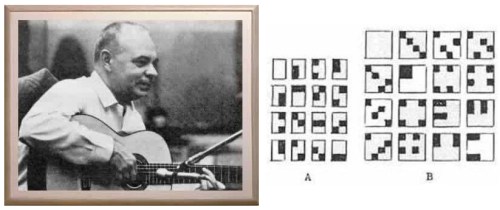

4. Image— Argument for the Existence of Rebecca
Some literary and cinematic background—

"Are you the butterfly… ?"
From post 4017 in this journal (do not click links)—
"Thanks to University Diaries for an entry on Clancy Martin,
a philosophy professor in the 'show me' state, and his experiences with AA."
Neither link in this quote works anymore.
See instead Martin in the London Review of Books .
Lottery hermeneutics, however, still seems usable.

Today's midday NY lottery "163" may be taken as a sequel
to both the page number "162" in today's noon post—

— Humboldt's Gift , page 163 (Penguin Classics, 1996)
— and a sequel to University Diaries ' meditation today on the Nobel literature prize,
which includes a quote from the winner:
"At last my life returns. My name appears like an angel.
Outside the walls a trumpet signal blows…. It is I! It is I!"
— Tomas Tranströmer, "The Name"
As for the evening NY numbers 014 and 5785, see Hexagram 14,
Not Even Wrong , and 5/7/85.
"Educated people— with some exceptions, like Nader— like to explore the senses, and indeed many of your humanities courses (like the one UD ‘s teaching right now about beauty, in which we just read Susan Sontag’s “Against Interpretation,” with its famous concluding lines: In place of a hermeneutics, we need an erotics of art ) feature artworks and ideas that celebrate sensuality."
This suggests a review lecture on the unorthodox concept of lottery hermeneutics .
Today's New York Lottery—

A quote suggested by the UD post—
"Sainte-Beuve's Volupté (1834) introduced the idea of idler as hero (and seeking pleasurable new sensations as the highest good), so Baudelaire indulged himself in sex and drugs."
— Article on Baudelaire by Joshua Glenn in the journal Hermenaut
Some reflections suggested by Hermenaut and by the NY evening numbers, 674 and 1834—
(Click images to enlarge.)
Cool Mystery:

Detective Cruz enters Planck's Constant Café in "The Big Bang."
As for the midday numbers—
For 412, see 4/12, and for 1030, see 10/30, Devil's Night (2005).
For further background, consult Monday's Realism in Plato's Cave.
Lottery hermeneutics for Michaelmas—
New York Lottery the evening of Thursday, Sept. 29, 2011—
499 and 6985.
For 499, see post 499 in this journal ("Angel Night," Sept. 29, 2002).
For 6985, see a Sunday, 6/9/85, review of Amy's Eyes , a children's book by Richard Kennedy.
"Especially for the adult reader, the narrator's musings comprise many of the book's great pleasures. He discusses the seductiveness of numerology, the 'Wayward Daughter of Mathematics'….''
NY Lottery this evening—

Continued from Themes of Sept. 17—
"And I heard, as it were, the noise of thunder."
Lottery hermeneutics for this evening—
747 — Source of the sound effect in a post of April 28, 2009:
"And Kali, ‘The Dark One,’ addressed him with the voice of a cloud of thunder…"
— The King and the Corpse , by Heinrich Zimmer
3695 — Number of a post on Steps Toward Salvation (Dec. 14, 2008)
"When you come to a fork in the road, take it." — Yogi Berra
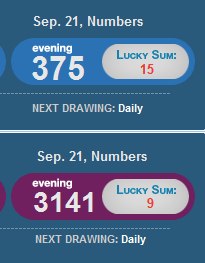
This evening's NY Lottery numbers were 375 and 3141.
Subjective interpretations—
There seems to be only one relevant result of a Google search for "375 Log24"—
There are, however, two relevant interpretations of the number 3141—
1. The Saturday Evening Post 3/1/41 article by Jack Alexander on AA—
"The members of Alcoholics Anonymous do not pursue or coddle
a malingering prospect, and they know the strange tricks of the alcoholic
as a reformed swindler knows the art of bamboozling."
2. Post number 3141 in this journal— Aesthetics for Jesuits.
742
as indicated by Gravity's Rainbow— the end of page 742—
by the New York Lottery on the evening of June 17, 2010—

and by this journal on the afternoon of that day—

Detail from New Yorker cover (fiction issue of June 2010)
(Continued from Tuesday's "A Story")
Tuesday's story, a collection of four random posts, was
suggested by Tuesday's NY lottery numbers.
That story leads, by association, to Frame Tale in
a post of 2:02 AM on Sunday, May 23, 2010. For related
material, see Death Story, a post of 9:40 PM that same Sunday.
Wednesday's numbers—

—suggest a counter-story…
Escape to Pine Mountain
A website on films about Latter-Day Saints (i.e., Mormons) asks
Was "Escape to Witch Mountain"
based on Zenna Henderson's "People" stories?
The lottery numbers above suggest the names of three women—
none, as far as I know, with any Mormon background—
who might rightly be called, without capital letters,
"latter-day saints"…
These three lives, taken together, may serve as
an antidote to the Death Story mentioned above.
"We tell ourselves stories…" — Joan Didion
"Therefore choose life." —God
For film producer and studio head John Calley, who died today at 81—
"When Death tells a story, you really have to listen." —The Book Thief (cover)

New York Lottery on Tuesday, September 13th, 2011
This suggests the following random thoughts—
|
797 April 24, 2003 |
451 August 26, 2002 |
|
1734 April 24, 2005 |
3276 March 24, 2008 |
(A sequel to The Lost Word)
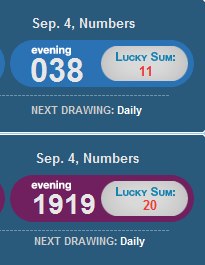
NY Lottery, Sunday, Sept. 4, 2011
The number "38" might refer, notably, to
… and, less notably, to a page number
that appears in most books.
T.S. Eliot's essay "Tradition and the Individual Talent"
was first published in 1919.*
For some background on that year, see the Harvard Class of 1919.
For a notable instance of the page number 38, see
Poetry and Belief in the Work of T.S. Eliot ,
by Kristian Smidt (first published in 1949 by
the Norwegian Academy of Science and Letters).
* "Tradition and the Individual Talent" in The Egoist
at the Modernist Journals Project:
Part I in Vol. 6, No. 4 (Sept. 1919),
Parts II-III in Vol. 6, No. 5 (Dec. 1919)
Sarah Tomlin in a Nature article on the July 12-15 2005 Mykonos meeting on Mathematics and Narrative—
"Today, Mazur says he has woken up to the power of narrative, and in Mykonos gave an example of a 20-year unsolved puzzle in number theory which he described as
Michel Chaouli in "How Interactive Can Fiction Be?" (Critical Inquiry 31, Spring 2005), pages 613-614—
"…a simple thought experiment….*
… If the cliffhanger is done well, it will not simply introduce a wholly unprepared turn into the narrative (a random death, a new character, an entirely unanticipated obstacle) but rather tighten the configuration of known elements to such a degree that the next step appears both inevitable and impossible. We feel the pressure rising to a breaking point, but we simply cannot foresee where the complex narrative structure will give way. This interplay of necessity and contingency produces our anxious— and highly pleasurable— speculation about the future path of the story. But if we could determine that path even slightly, we would narrow the range of possible outcomes and thus the uncertainty in the play of necessity and contingency. The world of the fiction would feel, not open, but rigged."
* The idea of the thought experiment emerged in a conversation with Barry Mazur.
Barry Mazur in the preface to his 2003 book Imagining Numbers—
"But the telltale adjective real suggests two things: that these numbers are somehow real to us and that, in contrast, there are unreal numbers in the offing. These are the imaginary numbers .
The imaginary numbers are well named, for there is some imaginative work to do to make them as much a part of us as the real numbers we use all the time to measure for bookshelves.
This book began as a letter to my friend Michel Chaouli. The two of us had been musing about whether or not one could 'feel' the workings of the imagination in its various labors. Michel had also mentioned that he wanted to 'imagine imaginary numbers.' That very (rainy) evening, I tried to work up an explanation of the idea of these numbers, still in the mood of our conversation."
See also The Galois Quaternion and 2/19.

New York Lottery last evening
There is an unwarranted leap here
from "suggests" to "knowledge."
See Under the Volcano and "harrowing" in this journal.
From a writer's requiem—
"Algis points out that at the end of each story, there should be a moment of validation, a place where a person in authority makes some sort of statement that lets the reader know that the story has reached its conclusion." —David Farland, June 9, 2008
Paraphrase of a version by an anonymous reader at Amazon.com (see previous post)—
"… someone who has no other vested interest in the story… steps forward and says 'He's dead, Jim' or 'Who was that masked man?'"
Moments of validation from today's midday NY Lottery— 4639 and 575.
For "He's dead, Jim," see April 6, 1939* (4/6/39) at St. Joseph's Church in Springfield, Mass.
For "Who was that masked man?," see the Mark of Zorro in Post 575.
* This was a Maundy Thursday, not the Good Friday indicated in the linked narrative.
An Amazon.com reader review of Algis Budrys's Writing to the Point: A Complete Guide to Selling Fiction—
"Mr. Budrys claims to have the secret to writing fiction that will sell. His secret is very useful but short enough to include here:
Beginning: Must consist of introducing a character, in a particular context, with a problem. And if there are important yet unique/unusual aspects of the character that will be revealed later in the story they must be foreshadowed in the beginning.
Middle: Must involve the character attempting to solve the problem and encountering unexpected failure. During this attempt he begins to learn more about the problem and himself. The character must undergo stress which causes hitherto concealed facets of him to be revealed-that must fit in. The character must try to overcome the problem a total of 3 times on a rising scale of effort, commitment, and depth of knowledge of the problem and one's self. At the last possible moment, with maximum effort and staking everything, he achieves victory. This must be done by wagering everything in a do-or-die situation. Conversely the villain, coming closer to his goal experiences defeat snatched from the jaws of victory-because of some flaw in character.
End: Validation and foreclosure by someone who has no other vested interest in the story. They step forward and say 'He's dead, Jim' or 'Who was that masked man?' This serves to close the story in the reader's mind."
Here are two parallel stories suggested by yesterday's New York Lottery numbers:
|
Evening: 003 and 8997— From an author born on 8/9/97: For the 003, see
7/11. |
Midday: 004 and 1931— From an author born on 1/9/31:
For the 004, see the ideogram
See also the day of the author's |
Happy Feast of St. Ignatius of Loyola.
The title is that of a chapter in the C.S. Lewis classic That Hideous Strength .
A search suggested by this afternoon's NY Lottery four-digit number,
8002, yields a forum post at WebOfNarcissism.com—
"a book that changed my life"—
"Here is the book:
http://www.amazon.com/What-Loved-Novel-Siri-Hustvedt/dp/0312421192
Warning. It is dark. But it is also lovely."
Whether it is deep as well, the reader may judge.
The quoted review is from a discussion by an anonymous user
of her relationship with someone called N. See also, in this journal,
The Story of N.
Happy St. Anne's Day.
Virginia Heffernan in Sunday's online New York Times—
"… In the past, information on paper was something to read. Bricks and mortar were a place to be. But, since the first appearance of the Web in 1990, we have come to accept that information in pixels is something to read— and also a place to be . That familiar and yet still jaw-dropping metaphor takes energy to maintain. The odd shared sense that there’s three-dimensionality and immersion and real-world consequences on the Web as in no book or board game— that’s the Web’s sine qua non. Hence, cyberspace . And 'being on' the Internet….
… The dominant social networks are fantasy games built around rigged avatars, outright fictions and a silent— and often unconscious— agreement among players that the game and its somewhat creaky conceits influence the real world…."
— "The Confidence Game at Google+"
"It's just another manic Monday
I wish it was Sunday
'Cause that's my funday"
— The Bangles
"Accentuate the Positive"
— Clint Eastwood, soundtrack album
for "Midnight in the Garden of Good and Evil"

This journal on All Saints' Day, Sunday, November 1, 2009—
|
Suggested by the New York State lottery numbers on All Hallows’ Eve [2009]— 430 (mid-day) and 168 (evening)… From 430 as a date, 4/30— Beyond Grief and Nothing: A Reading of Don DeLillo , by Joseph Dewey, University of South Carolina Press, 2006, page 123: “It is as if DeLillo himself had moved to an endgame….” For such an endgame, see yesterday’s link to a Mira Sorvino drama. The number 168 suggested by the Halloween lottery deals with the properties of space itself and requires a more detailed exegesis… For the full picture, consider the Log24 entries of Feb. 16-28 this year, esp. the entries of Feb. 27 and the phrase they suggest— Flores, flores para los muertos. |
See also Pearly Gates of Cyberspace in this journal.
For flores para los muertos , see today's Times .
"Nixon has no Rosebud."
— Master's thesis on an Oliver Stone film
(Dan B. Butler, May 2006)
Suggested by Peter J. Cameron's weblog post today on Halmos,
by a July 18 post in this journal on the Norwegian mathematician Abel,
by a link in the July 18 post to "Death Proof," and by today's
midday New York Lottery (459 and 7404)—
From July 4, 2004 (7404 interpreted as a date)—
"There are two unfortunate connotations of 'proof' that come from mathe-
matics and make the word inappropriate in discussions of the security of cryp-
tographic systems. The first is the notion of 100% certainty. Most people not
working in a given specialty regard a 'theorem' that is 'proved' as something
that they should accept without question. The second connotation is of an intri-
cate, highly technical sequence of steps. From a psychological and sociological
point of view, a 'proof of a theorem' is an intimidating notion: it is something
that no one outside an elite of narrow specialists is likely to understand in detail
or raise doubts about. That is, a 'proof' is something that a non-specialist does
not expect to really have to read and think about.
The word 'argument,' which we prefer here, has very different connotations."
— "Another Look at 'Provable Security',"
by Neal Koblitz and Alfred J. Menezes, July 4, 2004
(updated on July 16, 2004; October 25, 2004; March 31, 2005; and May 4, 2005)
As for 459, see Post 459 in this journal.
Related material: The Race, Crossing the Bridge, Aristophanic View, and Story Theory.
"Some mathematicians are birds, others are frogs.
Birds fly high in the air and survey broad vistas of
mathematics out to the far horizon. They delight in
concepts that unify our thinking and bring together
diverse problems from different parts of the
landscape. Frogs live in the mud below and see
only the flowers that grow nearby. They delight in
the details of particular objects, and they solve
problems one at a time. I happen to be a frog, but
many of my best friends are birds. The main theme
of my talk tonight is this. Mathematics needs both
birds and frogs. Mathematics is rich and beautiful
because birds give it broad visions and frogs give it
intricate details. Mathematics is both great art and
important science, because it combines generality
of concepts with depth of structures. It is stupid to
claim that birds are better than frogs because they
see farther, or that frogs are better than birds
because they see deeper. The world of mathematics
is both broad and deep, and we need birds and
frogs working together to explore it.
This talk is called the Einstein lecture…."
— Freeman Dyson, Notices of the American
Mathematical Society , February 2009
The Didion reading was suggested by the "6212" in yesterday evening's New York Lottery.
“The meeting is closed
with the Lord’s Prayer
and refreshments are served.”
* Courtesy of the NY Lottery.
Posts suggested by the New York Lottery today at midday— 632 and 2750.
Note the song linked to a quotation in the latter post—
Click on the link or the quote for the song.
Continuing yesterday's lottery meditation…
The NY evening numbers yesterday were 244 and 2962.
The latter suggests Post 2962—
There is no Post 244 here, but a search within this journal for 244 yields…
See also Halmos Tombstone and Death Proof.
A Sunday meditation continued from Burning Patrick—
For posts of a different sort, see O'Hara's Fingerpost and Cross-Purposes.
(The numbers of these posts were indicated by today's midday NY Lottery.)
See also "Ready when you are, C.B."
King Arthur and the Deathly Hallows
BLACK KNIGHT: None shall pass.
ARTHUR: What?
BLACK KNIGHT: None shall pass.
ARTHUR: I have no quarrel with you, good Sir Knight,
but I must cross this bridge.
BLACK KNIGHT: Then you shall die.
ARTHUR: I command you as King of the Britons
to stand aside!
BLACK KNIGHT: I move for no man.
ARTHUR: So be it!
— Monty Python
Above: Anthony Bushell as King Arthur in 1954.
Bushell died on April 2, 1997 (4/2/97).
"Well, she was just seventeen…."

NY Lottery this afternoon:

See Post 757— "Release Date"— and The-Numbers.com
on a film with the release date 7/3/85.
* Title of a course at Harvard. See (for instance)
the Harvard page on The Numerology of the Beast—
"Now in math the magic is not in special numbers
like 7 or 28, but in the fabric of number systems…."
Sure it is.
Part I, Midday —
Yesterday's midday NY Lottery "689" suggests (from April 3, 2005)—
| 689 |  |
[fú] blessing, good fortune |

Diagram taken from R. Sing,
“Chinese New Year’s Dragon Teacher’s Guide”
— and the 4-digit midday number suggests a NASA Picture of the Day
that was published (not taken) on 7795 (7/7/95)—

Part II, Evening —
Suggested by yesterday's evening NY Lottery "068"
and by Weltschmerz and the Ursprache —

— Walter Benjamin, “On Language as Such and On the Language of Man” (1916),
Edmund Jephcott, tr., Walter Benjamin, Selected Writings, Volume I: 1913-1926 ,
Marcus Bullock and Michael W. Jennings, eds., Cambridge, MA,
Harvard University Press, 1996, pp. 62-74. The above is page 68.
A more entertaining meditation is suggested by yesterday's 4-digit evening NY number—
a video tribute to a song said to have been released as a single on 7383 (7/3/83)—
Related material— "Dark Side of the Moon" in this journal.

The "232" was suggested by today's evening New York lottery, as
was the work of mathematician David Donoho (born 3/5/57).
Donoho is an expert on wavelets and related functions.
This post's title was suggested by the Mexican Hat wavelet
and by the Wallace Stevens poem "The Pastor Caballero"
quoted in last night's post.
As for today's midday lottery, see a reference to 645
in Imago Creationis and remarks from 3354 (3/3/54)
by Pauli on quantum theory and "small macroscopic spheres"
[for instance, Ping Pong balls].
Von Neumann's theory…
"tries to make the imponderable ponderable." — Various authors
As does some poetry.
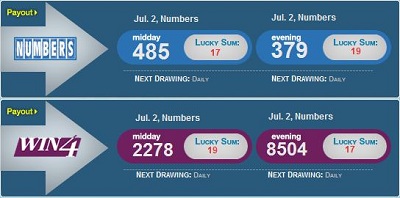
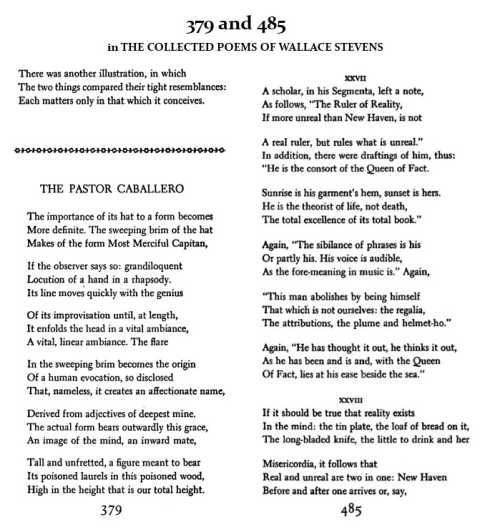

For further details, click on the hat.
A portrait reproduced here on October 11, 2007—



The above was suggested by yesterday's New York Lottery and by
items dated February 8, 1958 (date of receipt of an AMS Bulletin article)
and February 1, 1953 (newspaper article on applied game theory).
(This covers three of the four relevant lottery numbers.
For the fourth, see 9/19 and recent discussions of
The End of Mr. Y (Sunday Dinner and A Link for Sunrise)).
See also Saint John Neumann.

For more about Rome, see two pages from Stevens suggested
by the New York Lottery numbers from today, St. Peter's Day.
The pages mention "Rome after dark" and a "disused ambit
of the soul." Those who prefer a "more severe, more
harassing master" may consult the date 8/6/79 suggested by
the New York Lottery this afternoon and, from that date,
Freeman Dyson's memoir in The New Yorker .
This evening's four-digit number, 0006, may, if one likes,
be regarded as an "artist's signature" of sorts.
The New Yorker on Dyson—
"He recalls that at age 8 he read 'The Magic City,'
by Edith Nesbit. It is the story of a crazy universe.
He now sees that this universe bears a strong
resemblance to the one we live in."
"He gazed out of the window hoping that somehow everything could make sense to him."
— "Passing in Silence," by Oliver Humpage
"You gotta be true to your code." —Sinatra
Exercise: Trace a path from the June 27 NY Lottery numbers
to the above two quotations. Hint: See Cuernavaca and
Pilgrim's Progress in TIME Magazine, May 3, 1948.
For some further background, click on the CBS quote above.
I still prefer, as I did in 1948, less up-to-the-minute developments.
* The title refers to the phrase "the artist's signature."
This evening's NY Lottery numbers were 531 and 8372.
Hermeneutics—
From a Google search for "531 Log24"—
| Log24 on Sunday, Sept. 21, 2008
531 , Revelation without belief 116. Evening (Belief), Belief without… The date, 5/24, of the entries linked to in Thursday's noon Log24 entry… Pynchon on Quaternions – Log24 8. on Page 531 : "… to imps of ingenious discomfort. "Is this a stag affair, or are there likely to be one or two lady Quaternion- ists?…" |
The "531" linked to in the Sept. 21, 2008, post above is a mini-drama ending at midnight on 5/31, 2008— the conclusion of Mental Health Month.
And the above 4-digit evening number suggests a search for births on 8/3/72 that yields—
Erika Marozsán, Hungarian actress, 38.
Marozsán starred in "Gloomy Sunday—A Song of Love and Death" (A German/Hungarian film from 1999).
Wikipedia informs us that this "is inaccurately claimed to be the world's longest running film."
Whether Marozsán is a Quaternionist, I do not know.
For love, death, and quaternions, see the post Metaphor from Feb. 22 linked to in this afternoon's Sunday Dinner.
From "Sunday Dinner" in this journal—
"'If Jesus were to visit us, it would have been
the Sunday dinner he would have insisted on
being a part of, not the worship service at the church.'"
—Judith Shulevitz at The New York Times
on Sunday, July 18, 2010
Some table topics—
Today's midday New York Lottery numbers were 027 and 7002.
The former suggests a Galois cube, the latter a course syllabus—
CSC 7002
Graduate Computer Security (Spring 2011)
University of Colorado at Denver
Department of Computer Science
An item from that syllabus:
| Six | 22 February 2011 | DES | History of DES; Encryption process; Decryption; Expander function; S-boxes and their output; Key; the function f that takes the modified key and part of the text as input; mulitple Rounds of DES; Present-day lack of Security in DES, which led to the new Encryption Standard, namely AES. Warmup for AES: the mathematics of Fields: Galois Fields, particularly the one of order 256 and its relation to the irreducible polynomial x^8 + x^4 + x^3 + x + 1 with coefficients from the field Z_2. |
Related material: A novel, PopCo , was required reading for the course.
Discuss a different novel by the same author—
Discuss the author herself, Scarlett Thomas.
Background for the discussion—
Derrida in this journal versus Charles Williams in this journal.
Related topics from the above syllabus date—
Metaphor and Gestell and Quadrat.
Some context— Midsummer Eve's Dream.
This evening's New York Lottery number was 776.
From this journal's post number 776—
ART WARS:

Lindsay Lohan was back in court today.
"The judge… ordered Lindsay may have no more than one friend
over at a time for the remainder of her house arrest" —Star Magazine
"Winter, spring, summer or fall
All you have to do is call"
— Eustace Tilley
Tracking Shot

Related material—
See also this journal's September 2009 posts.
This post was suggested by today's previous post and by today's NY Lottery.
For some background to the ioncinema.com post numbered 4210 above,
see, in conjunction with the page headed "Azazel" linked to here earlier today,
the ioncinema.com post numbered 5601.
|
“Stranger, dreams verily are baffling and unclear of meaning, For two are the gates of shadowy dreams, But in my case it was not from thence, methinks, Translation by A.T. Murray, in two volumes. Quoted in a press release for the film "Two Gates of Sleep." |
From the post numbered 460 in this journal—
At the still point… from the film "Absolute Power" :

Photo credit – Graham Kuhn
I’ve heard of affairs that are strictly plutonic,
But diamonds are a girl’s best friend!
The title was suggested by this evening's 4-digit NY lottery number.
"… the rhetoric might be a bit over the top."

According to Amazon.com, 2198 (i.e., 2/1/98) was the publication
date of Geometry of Vector Sheaves , Volume I, by Anastasios Mallios.
Related material—
The question of S.S. Chern quoted here June 10: —
"What is Geometry?"— and the remark by Stevens that
accompanied the quotation—
"Reality is the beginning not the end,
Naked Alpha, not the hierophant Omega,
of dense investiture, with luminous vassals."
— Wallace Stevens,
“An Ordinary Evening in New Haven” VI
The work of Mallios in pure mathematics cited above seems
quite respectable (unlike his later remarks on physics).
His Vector Sheaves appears to be trying to explore new territory;
hence the relevance of Stevens's "Alpha." See also the phrase
"A-Invariance" in an undated preprint by Mallios*.
For the evening 3-digit number, 533, see a Stevens poem—

This meditation by Stevens is related to the female form of Mallios's Christian name.
As for the afternoon numbers, see "62" in The Beauty Test (May 23, 2007), Geometry and Death, and "9181" as the date 9/1/81.
* Later published in International Journal of Theoretical Physics , Vol. 47, No. 7, cover date 2008-07-01
NY Lottery this evening: 3-digit 444, 4-digit 0519.
444:
"… of our history … and of our destructive paths.
We are beginning to sense the need to restore
the sacred feminine." She paused. "You
mentioned you are writing a manuscript about
the symbols of the sacred feminine, are you not?"
"I …"

Related material— "Eightfold Geometry" + Spider in this journal.
For this afternoon's NY numbers— 511 and 9891— see
511 in the "Going Up" post of July 12, 2007, as well as
Ben Brantley's recent suggestion of Paris Hilton as a
matinee attraction and her 9891 photo on the Web.
Ben Brantley in The New York Times on May 26—
While you theatergoing butterflies out there keep nattering on about the Tonys— who will win, who should win, and so on— I have been focused on an issue of far greater momentousness and urgency. That’s the shameful squandering on Broadway of what our country would seem to believe is our most valued (and infinitely exploitable) natural resource: our celebrities….
Lindsay Lohan: This undeniably talented (and for all intents and purposes, former) film actress poses a special challenge. Her only recent work appears to have been as a paparazzi model and professional partygoer, and a big, line-laden dramatic part like Blanche DuBois might be too onerous to start with. So why not put her in the Broadway premiere of “Finishing the Picture,” a late-career Arthur Miller play inspired by the travails of making a movie (“The Misfits”) with his wife Marilyn Monroe? Having seen a production of this play in Chicago, I can testify that the Marilyn part requires only that the actress playing her be willing to appear asleep and stupefied and, briefly, to walk across the stage naked. For Ms. Lohan, who credibly impersonated Marilyn for a New York magazine photo shoot, this ought to be a cinch. Should an eight-performance week prove too taxing, I suggest Paris Hilton for matinees.
This midnight post was suggested by Sunday's midday 4-digit NY Lottery number, 7286, and by the following web pages:
7286 Style by Lindsay Lohan and 7286 Prisoner Transport.
Some background from a third 7286 web page—
Starlet Lindsay Lohan is bringing her signature Hollywood style to the masses with her new 7286 line. The starlet's stylish stamp is on every aspect of the line, from the name (7-2-86 is her birthday) to the brand's tag line : "Give a girl the right handbag, and she can conquer the world!"
Magic Time!

For fans of Douglas Adams and St. Augustine
Update of 2:20 AM June 13:
For the midday "042" as a reference to Adams, see Wikipedia. The "828" may be interpreted as a reference to St. Augustine's feast day, 8/28… or, for the more secularly minded, a reference to the time 8:28 PM (to go with the evening "0845" as a reference to 8:45 PM). For further details, see Times of the Times . The midday "7286" is more difficult. See midnight's Broadway Cinderella.
Some background for yesterday’s posts:
Midrash for Gnostics and related notes,
as well as yesterday’s New York Lottery.
…. “We seek
The poem of pure reality, untouched
By trope or deviation, straight to the word,
Straight to the transfixing object, to the object
At the exactest point at which it is itself,
Transfixing by being purely what it is….”
— Wallace Stevens (1879-1955),
“An Ordinary Evening in New Haven” IX
“Reality is the beginning not the end,
Naked Alpha, not the hierophant Omega,
of dense investiture, with luminous vassals.”
— Wallace Stevens,
“An Ordinary Evening in New Haven” VI
“A hierophant is a person who brings religious congregants into the presence of that which is deemed holy . The word comes from Ancient Greece, where it was constructed from the combination of ta hiera , ‘the holy,’ and phainein , ‘to show.’ In Attica it was the title of the chief priest at the Eleusinian Mysteries. A hierophant is an interpreter of sacred mysteries and arcane principles.”
Weyl as Alpha, Chern as Omega—
Postscript for Ellen Page, star of “Smart People”
and of “X-Men: The Last Stand“— a different page 679.
Your assignment, should you choose to accept it—
Interpret today’s NY lottery numbers— Midday 815, Evening 888.
My own bias is toward 815 as 8/15 and 888 as a trinity,
but there may be less obvious and more interesting approaches.
Suggested by this afternoon’s NY Lottery number, 541—
Related material: Finite Relativity and The Schwartz Notes.
A meditation, while watching the Country Music Television
CMT Awards, on today's evening NY lottery number 469.
For Reese Witherspoon* and Dionysus, not Apollo—
A Funny Thing Happened
on the Way to the Edifice

— Page 469 of Wallace Stevens's Collected Poems
See also page 469 of Gravity's Rainbow (Penguin Classics 1995 paperback)—

* Not the Witherspoon Church of this evening's 6 PM entry.
Reese won Sunday's 2011 MTV Movie Awards' Generation Award .
Both the MTV Movie Awards and the CMT Awards are productions
of MTV Networks, a subsidiary of Viacom Inc. For some background,
see Sumner Redstone (formerly Rothstein).
Today's midday NY lottery number was 176.
An occurrence of that number in this journal—
Umberto Eco,
Foucault’s Pendulum, page 176:
Here, too, you entered through a little garden…
Here is a picture of 176.
Powered by WordPress